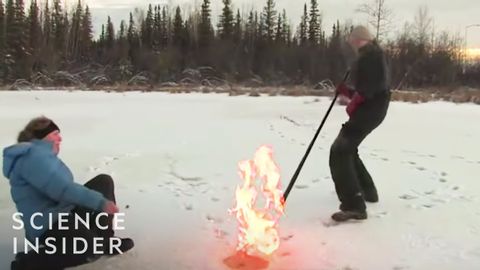為什麼你能點燃這些冰凍湖泊的火種 (Why You Can Light These Frozen Lakes On Fire)
 沒有此條件下的單字
沒有此條件下的單字US /ˈʌltəmɪtli/
・
UK /ˈʌltɪmətli/
US /ˈprɑsˌɛs, ˈproˌsɛs/
・
UK /prə'ses/
- v.t.用電腦處理(資料);(依照規定程序)處理;處理;流程;加工;理解
- n. (c./u.)(規定的)程序;過程;進程;方法;法律程序;進程
US /ˈslaɪtli/
・
UK /ˈslaɪtli/
- v.i.是重要的
- n. (u.)物質
- n.件事情;問題;原因
